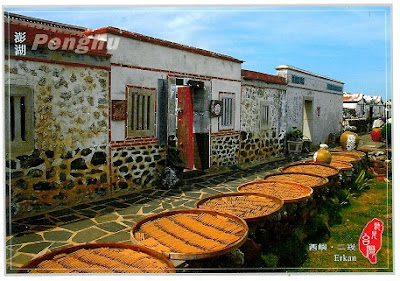When I thanked Marcel for the Lower Germanic Limes card, I told him that I was only missing a card of the Danube Limes to have all the German sites. Knowing this, he kindly offered me a card of Porta Praetoria in Regensburg. I shouldn't have needed a swap to get this postcard, I've been to Regensburg, I've seen Porta Praetoria, I took pictures of it but didn't buy any cards of it. I don't know if I didn't see any cards or if I didn't find it interresting enough to buy cards. Now I've a card of it and cards of all the German UNESCO sites.
The German part of the Danube Limes consists of 24 locations between Eining near Regensburg and Passau near the Austrian border. The majority of the structures are preserved below ground, original remains are visible at Bad Gögging (thermal baths), Regensburg (Porta Praetoria, included in the WHS Old Town of Regensburg), and at the Roman Museum Boiotro in Passau. - in: https://www.worldheritagesite.org
Foto: Thomas Ferber
Coming into the city centre from the river, you can see Germany’s most ancient stone building, the Porta Praetoria, a gateway dating from 179 A. D. Giant blocks of stone were used to construct this gate in the northern wall of the Roman military camp. It survives as a reminder of Castra Regina, the Roman settlement. - in: https://tourismus.regensburg.de
%20-%20C%C3%B3pia.jpg)

.jpg)
%20-%20C%C3%B3pia.jpg)

%20-%20C%C3%B3pia.jpg)
.jpg)


%20-%20C%C3%B3pia.jpg)
%20-%20C%C3%B3pia.jpg)

%20-%20C%C3%B3pia.jpg)
%20-%20C%C3%B3pia.jpg)
%20-%20C%C3%B3pia.jpg)
%20-%20C%C3%B3pia.jpg)
.jpg)
%20-%20C%C3%B3pia.jpg)
%20-%20C%C3%B3pia.jpg)

%20-%20C%C3%B3pia.jpg)
%20-%20C%C3%B3pia.jpg)
%20-%20C%C3%B3pia.jpg)
%20-%20C%C3%B3pia.jpg)
.jpg)

.jpg)
.jpg)
%20-%20C%C3%B3pia.jpg)
%20-%20C%C3%B3pia.jpg)
%20-%20C%C3%B3pia.jpg)

%20-%20C%C3%B3pia.jpg)
%20-%20C%C3%B3pia.jpg)
%20-%20C%C3%B3pia.jpg)
%20-%20C%C3%B3pia.jpg)
.jpg)
%20-%20C%C3%B3pia.jpg)
%20-%20C%C3%B3pia.jpg)
.jpg)
.jpg)

%20-%20C%C3%B3pia.jpg)

.jpg)
%20-%20C%C3%B3pia.jpg)